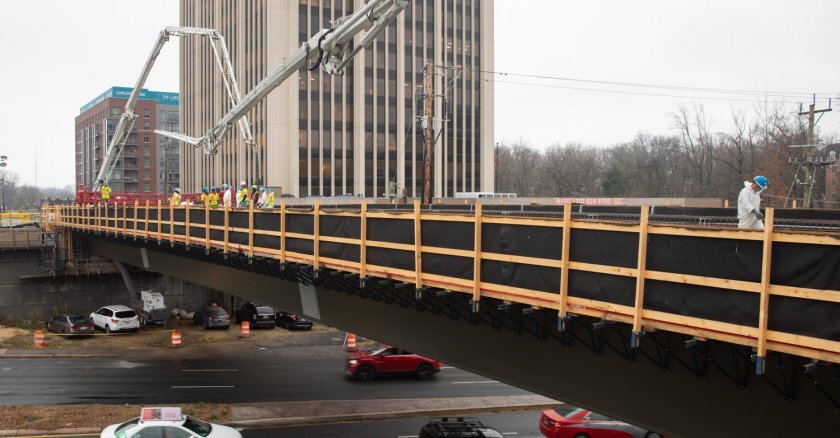Six years ago, it was illegal to construct anything other than a single-family home in almost 75 percent of Minneapolis’ residential zones, a practice deeply ingrained in our city since the 1960s. But in 2018, we got a miracle (unrelated to the Vikings): The City Council passed its game-changing 2040 plan, becoming the first major U.S. city to eliminate single-family zoning and opening up the field for duplexes and triplexes in all neighborhoods citywide.
Unfortunately, the courts recently blocked the city from further implementing the plan following a years-long legal saga.
The judge cited the need for a proper environmental review, a requirement not previously necessary for such reforms. As of now, the city must revert to the 2030 plan. Ironically, the previous decennial plan also lacked an environmental review.
Since environmental laws are so vague, they can be applied to oppose almost any developmental project, regardless of its environmental impact.
The two environmental groups that brought the lawsuit — Smart Growth Minneapolis and Minnesota Citizens for the Protection of Migratory Birds — used the Minnesota Environmental Rights Act, known as MERA, to halt construction, which is meant to “provide an adequate civil remedy to protect air, water, land, and other natural resources located within the state from pollution, impairment, or destruction.” According to this reasoning, nearly any project that has the potential to cause harm will likely face opposition, regardless of its upsides. While acknowledging potential concerns that adding 150,000 new units brings, Minneapolis says its 2040 plan is a flexible vision, not a rigid mandate. The city anticipates closer to 40,000 new homes by 2040.
NIMBYist groups supporting the halt argue that the 2040 plan’s cumulative impact would create pollution and reduce green space. The plan’s advocates, such as Neighbors for More Neighbors and Friends of the Mississippi River, point out the 2040 Plan’s potential to reduce energy demand and greenhouse gas emissions, countering the misconception that dense areas are environmentally detrimental.
A 2021 study found that switching from single to multifamily housing reduces energy demand by 27–47 percent per household, and easing restrictions on multifamily housing can significantly lower future residential energy use and greenhouse gas emissions.
Producing denser buildings will accommodate people more efficiently, and it will also free up land for more green spaces. These parks and gardens would offer recreational opportunities and serve as the lungs of our city, a utopian vision for environmentalists. And the environmental benefits are just the beginning.
Within its two-and-a-half-year run, the 2040 plan has already demonstrated positive outcomes. According to Mayor Jacob Frey, the 2040 plan created 256 new units of affordable housing that would not have been authorized under the 2030 plan.
The Minneapolis construction boom kept housing and rental prices more affordable while rent inflation soared in other cities. Between 2017 and 2021, Minneapolis saw rents rise by just 1 percent, compared with a 31 percent increase in rents nationally. Thanks to the affordable housing costs, by last summer Minneapolis cooled its overall inflation rate to 1 percent, less than a third of the national rate of 3.2 percent.
Minneapolis isn’t the only city reaping the benefits of bold zoning reforms. After implementing pro-density policies inspired by the Land of 10,000 Lakes, New Rochelle, a city just outside New York City, saw its housing stock surge by 12 percent between 2018 and 2021, four times the national average.
Terminating the 2040 plan jeopardizes over 100 affordable units in a time of tremendous need, such as the Harrison Townhomes in north Minneapolis, where many households struggle economically, and 70 percent of its residents are people of color. Since the racist housing policies of the redlining era, discriminatory zoning practices have historically relegated communities of color to under-resourced neighborhoods with limited access to quality housing. Halting these affordable housing projects disproportionately harms marginalized communities and those most in need.
In an effort to prevent NIMBYs from stalling development statewide, Rep. Steve Elkins, DFL-Bloomington, proposed a bill protecting city plans from the kinds of litigation Minneapolis is embroiled in. The bill stalled out last session but should reemerge this year. Elkins saw the danger of vague environmental concerns being used to stall progress. The court’s recent ruling, masked in similar concerns, serves as another unfortunate obstruction.
This kind of litigation cannot be a roadblock to progress and prosperity. We need zoning reform that embraces density, which is the synergy of affordability and sustainability. Time is running out on Minneapolis’ dreams. With each passing day, more and more projects stall and face an uncertain future.
Governing’s opinion columns reflect the views of their authors and not necessarily those of Governing’s editors or management. This article was first published by the Minnesota Reformer.












